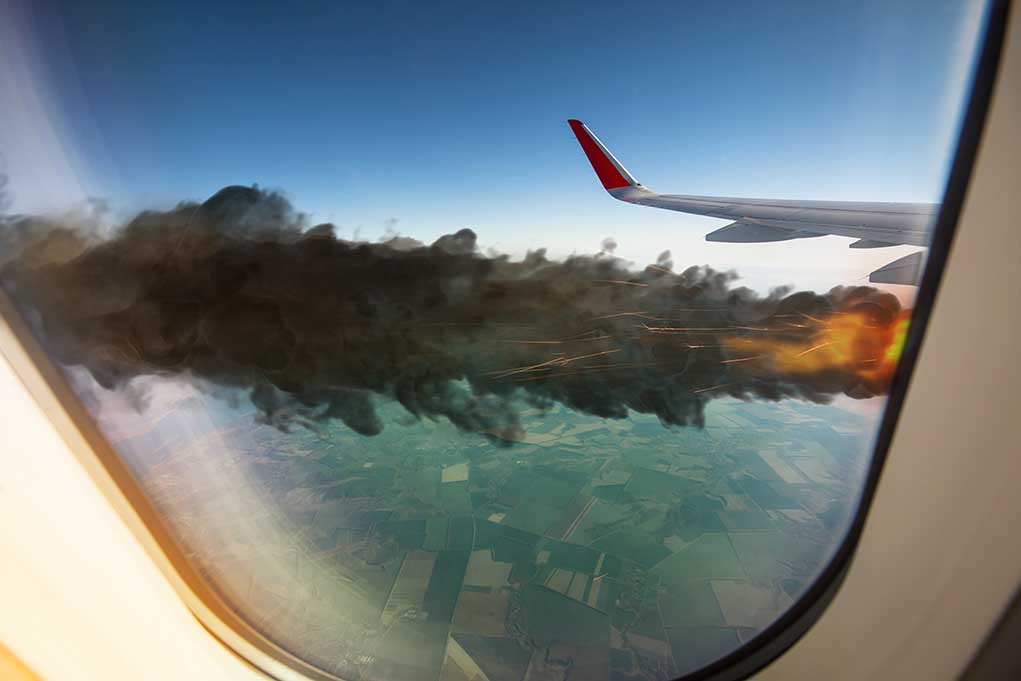
Boeing faces a deepening crisis as the Air India Flight AI171 crash, killing 241 of 242 people onboard and dozens on the ground, exposes a pattern of systemic quality and safety failures across the company’s last five commercial airliner programs.
Key Takeaways
- Air India Flight AI171, a 14-year-old Boeing 787-8, crashed shortly after takeoff from Ahmedabad, killing all but one of the 242 people onboard and at least three dozen on the ground
- India’s aviation regulators have ordered immediate additional inspections and maintenance on the country’s Boeing 787 fleet, with 8 of 34 aircraft already examined
- The U.S. has not grounded Boeing 787s domestically, as investigators caution against premature conclusions before a thorough investigation
- The crash highlights Boeing’s troubling pattern of safety, quality, and production issues across its last five commercial airliner programs
- Boeing CEO Kelly Ortberg canceled air show appearances as the company faces renewed scrutiny over its safety culture
The Devastating Air India Crash
Air India Flight AI171, bound for London’s Gatwick Airport, crashed shortly after takeoff from Ahmedabad, resulting in a catastrophic loss of life. The 14-year-old Boeing 787-8 Dreamliner went down with 242 people aboard, with only one survivor pulled from the wreckage. At least three dozen people on the ground were also killed in the disaster, making it one of the deadliest aviation accidents in recent years. The crash scene, spread across a densely populated area, has complicated recovery and investigation efforts as international teams work to determine the cause.
In the immediate aftermath, Boeing issued a statement expressing support for the airline and condolences to those affected. “We are in contact with Air India regarding Flight 171 and stand ready to support them. Our thoughts are with the passengers, crew, first responders and all affected,” said Boeing, in an official statement from Yahoo News.
Emergency Response and Safety Measures
India’s aviation regulators have acted swiftly, mandating additional maintenance checks on the country’s fleet of 34 Boeing 787 aircraft. Eight planes have already undergone inspection under these new guidelines, with the remainder to follow. Air India has been instructed to implement these additional safety measures immediately, while international aviation authorities monitor the situation closely. The crisis has led to significant disruptions in Air India’s operations as they work to comply with new safety directives while maintaining their flight schedules.
“Boeing CEO Kelly Ortberg quickly canceled plans to attend the air show,” said Scott Hamilton, aviation analyst from Leeham News.
The U.S. Federal Aviation Administration (FAA) has not found immediate safety concerns that would justify grounding Boeing 787 flights within the United States. U.S. Transportation Secretary Sean Duffy emphasized that the investigation must proceed methodically before any regulatory decisions are made. A team comprising representatives from the FAA, National Transportation Safety Board, Boeing, and GE Aerospace has been dispatched to India to assist with the investigation, highlighting the international cooperation in addressing this tragedy.
Boeing’s Pattern of Systemic Problems
This latest disaster comes at a critical time for Boeing, which has been plagued by quality and safety issues across its commercial aircraft programs. The 787 Dreamliner program itself has faced numerous safety, quality, and production issues since its inception. These problems follow a troubling pattern seen in Boeing’s last five commercial airliner programs, including the infamous 737 MAX crisis that resulted in two fatal crashes and a 21-month worldwide grounding. The 747-8, 777X, and KC-46A military tanker programs have all experienced significant delays, cost overruns, and design flaws.
“People are looking at videos and trying to assess what happened, which is never a strong, smart way to make decisions on what took place,” said Sean Duffy, cautioned the Transportation Secretary from Yahoo News.
The cumulative effect of these issues has severely damaged Boeing’s reputation and raised serious questions about the company’s safety culture and quality control procedures. The Air India crash has intensified scrutiny of these systemic problems, with analysts suggesting that CEO Kelly Ortberg faces an enormous challenge in addressing the deep-rooted issues within the company. Without fundamental changes to Boeing’s approach to aircraft design, testing, and production, the company risks further setbacks that could threaten its position in the global aviation market.
Investigation and Future Implications
As investigators begin the painstaking process of determining what caused the Air India crash, aviation experts are urging caution against jumping to conclusions based on preliminary information or video footage. “They have to get on the ground and take a look. But again right now it’d be way too premature,” said Sean Duffy, Transportation Secretary from Yahoo News. The U.S. government has committed to implementing any necessary safety recommendations that emerge from the investigation.
For Boeing, this latest disaster represents yet another crisis point in a troubled recent history. The company must now not only cooperate fully with investigators but also take meaningful steps to address the systemic issues that have plagued its aircraft programs. The outcome of this investigation could have far-reaching implications for Boeing’s future, potentially leading to additional regulatory scrutiny, design changes to the 787 fleet, or even more comprehensive reforms of the company’s approach to aircraft development and production. The aviation industry and flying public will be watching closely as this situation develops.

















